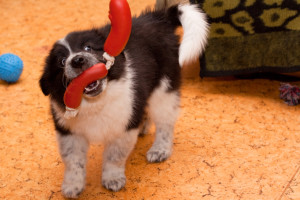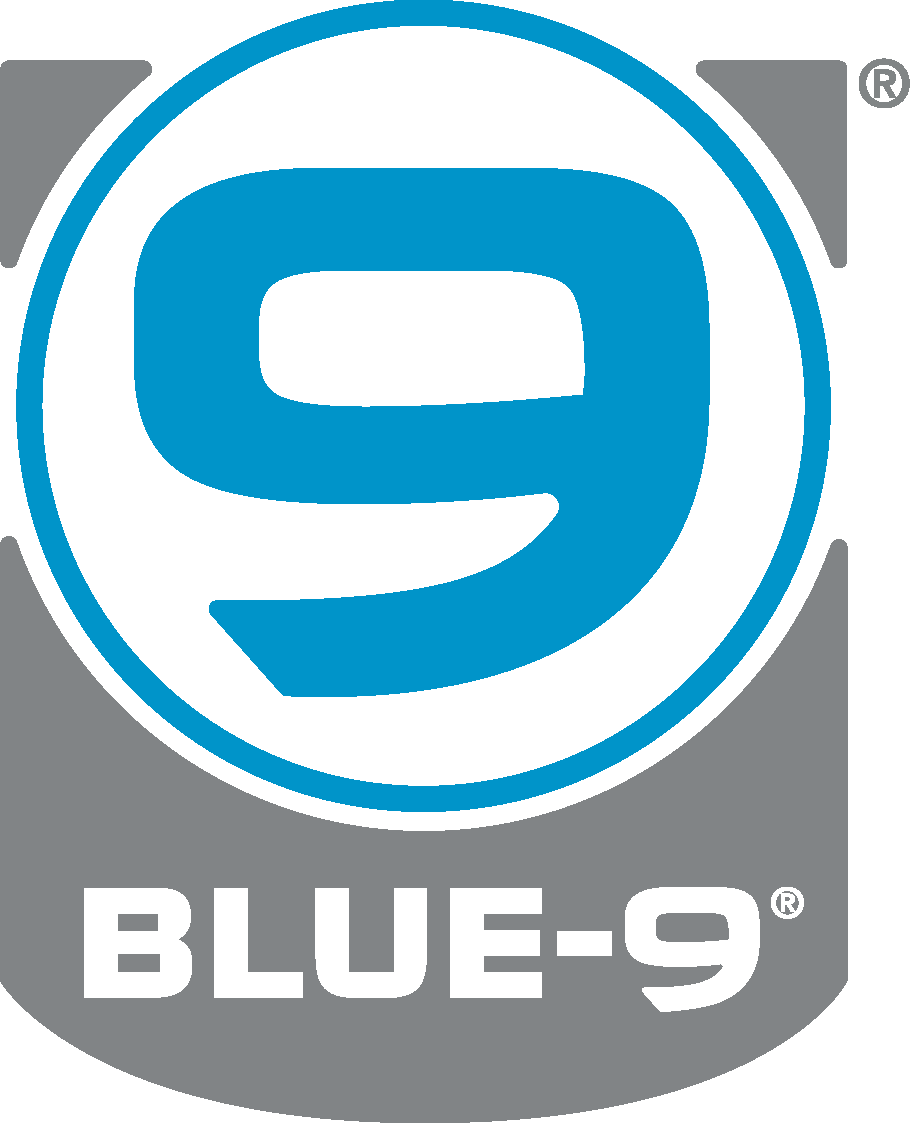Are You Rewarding Biting (by accident)?

Good boy! Teeth on toys is ideal, but you have to teach it – or you become the toy.
Anyone who has ever raised a puppy has experienced the bite marks and torn sleeves that little snapping jaws leave in their wake. Pups of every shape, size and breed will bite at your hands, clothing, and even your face if you lean in too close! The frenetic jaws of puppies are especially active between the 2 and 4-month-old period, but for many dog owners it doesn’t get better after that. For some, it gets worse. The reason for this is that many dog owners don’t realize that every interaction is a lesson. Most times when they play with their pup, they are accidentally rewarding “impolite” behavior with jaws and teeth. How? Just by continuing to play with a pup whose mouth is out of control. The simple fact is that if you keep playing a game while a pup is snapping at you or snatching a toy from your hand without waiting, you reward out-of-control biting. In other words, by continuing any interaction that includes you getting bitten, you are rewarding the biting. You have to STOP the interaction, otherwise the attention and the game (grabbing and tugging on you) is an instant and continuous reward. Any behavior that gets rewarded gets repeated. With a strong reward history, mouthing and grabbing will become part of your dog’s social repertoire and harder to change over time. On the other hand, if you pay careful attention to your responses, and make sure you never reward biting with attention, play, touch, praise, or the like, then most puppies will grow out of it. You will see steady improvement, especially in the period between 3 to 5 months, at the end of which the pup should have very good control of its mouth and demonstrate polite behavior with it in all interactions with your body and clothing. Here’s a great method for getting pups on the right track towards this goal.
Step 1: You must teach pups to focus their mouths on toys.
Especially during play with you.
Here’s how: Get a toy that is easy for your pup to grab. Engage her natural instinct to CHASE by moving it along the floor. If your pup is not chasing it, you are not making it interesting enough! I hate to say it, but you have to make the toy move like a wounded squirrel. Make it dash about, then suddenly stop and move very slowly, then make it dash about again. (Sorry for the faint of heart on the squirrel reference, but I didn’t invent this predator/prey stuff, mother nature did.) If the toy has a squeaker, use it. It’ll dial up enthusiasm as needed. Once your pup starts focusing on the toy, praise her. Lavishly. Come on, get into it. Tell her how proud you are that she’s choosing toys over your body parts.
Step 2: You must teach the pup to become aware of what her mouth is targeting – and choose NOT to target skin or clothing.
One great method for teaching puppies not to bite is to use a hand block when you are playing games with toys. This is a way for your puppy to learn the hugely important lesson of self-control with her mouth and jaws. The goal is for the pup to learn that teeth on toys is acceptable and fun, whereas teeth on skin or clothing is NOT allowed and will end all fun immediately.
Select a toy that is small or “scrunchy” so that you can easily hide it behind your two hands when the time comes. A tennis ball, small rope bone, small stuffed animal, or small squeaker – all will work great. Once you have a dog who loves to play with a toy, you are ready to go! Get the dog excited about the toy by letting him chase it and pounce at it. Then, suddenly pick up the toy and hide it behind your two hands with the back of your hands facing the dog. Watch the video to see what I mean.
When you hand block the toy, it is critical that you keep your hands out right in front of the dog to give him a choice. He can either bite your hands, or stand back for a second and wait. If he bites your hands you will NOT continue the game. You can completely ignore him and keep your hands still, right where they are, or you can stand up and turn away for a few seconds. I like to completely ignore, but some people find their pups bite too hard for that. If you did ignore the biting, you will notice that at some point the pup stops and stands back. Watch for that split second when the pup stops biting and moves back. NOW, praise and immediately start moving the toy around on the floor again as a play reward! You are rewarding the instant the pup decides to stand back and wait rather than jump at your hands and bite them.
Repeat this over and over, making it NO fun if the dog bites or jumps at you (no play), and LOTS of fun when the dog shows self control by waiting for you each time you do a hand block (the reward for the pup standing back is another chance to chase the toy, tug, or fetch). Notice how the Westie in the video never touches his teeth to my skin. Watch him carefully when I hand block. See how he turns his mouth away right when I do it? He didn’t start out that way. He learned it! This exercise accomplishes a lot: mouth control, respect for your space, patience, and focus on toys rather than human body parts. Playing with your dog also enhances your bond – BIG TIME. And playing with rules sets the groundwork for a relationship based on RESPECT. Try it and see the difference.
Thanks to the wonderful and handsome puppy, Fergus, who will help me demonstrate the technique in this video.
~
Have you always had a way with dogs and wanted to do something more with it? Our national courses are designed to make you a pro. Click here to discover what you can learn at CATCH and how you can help dogs and their owners with your skills.






 Phone:
Phone: